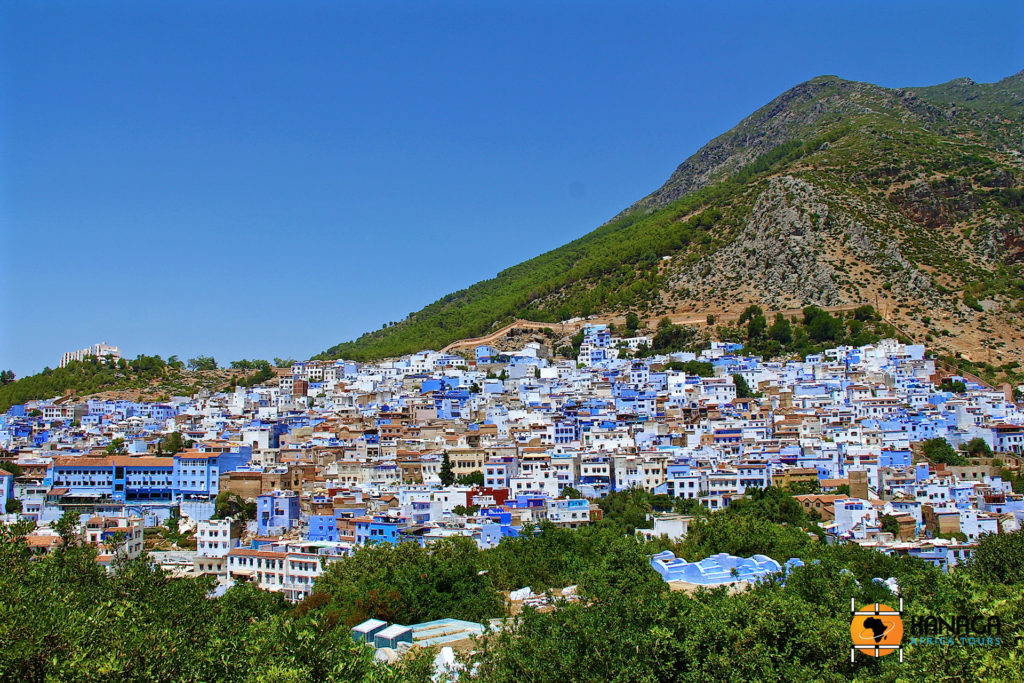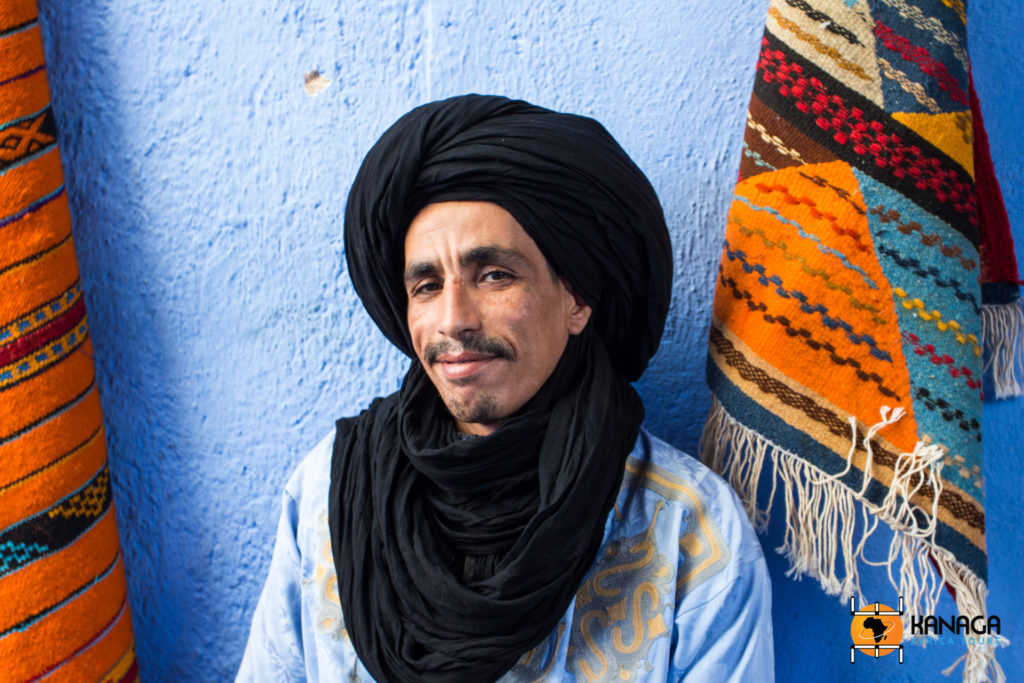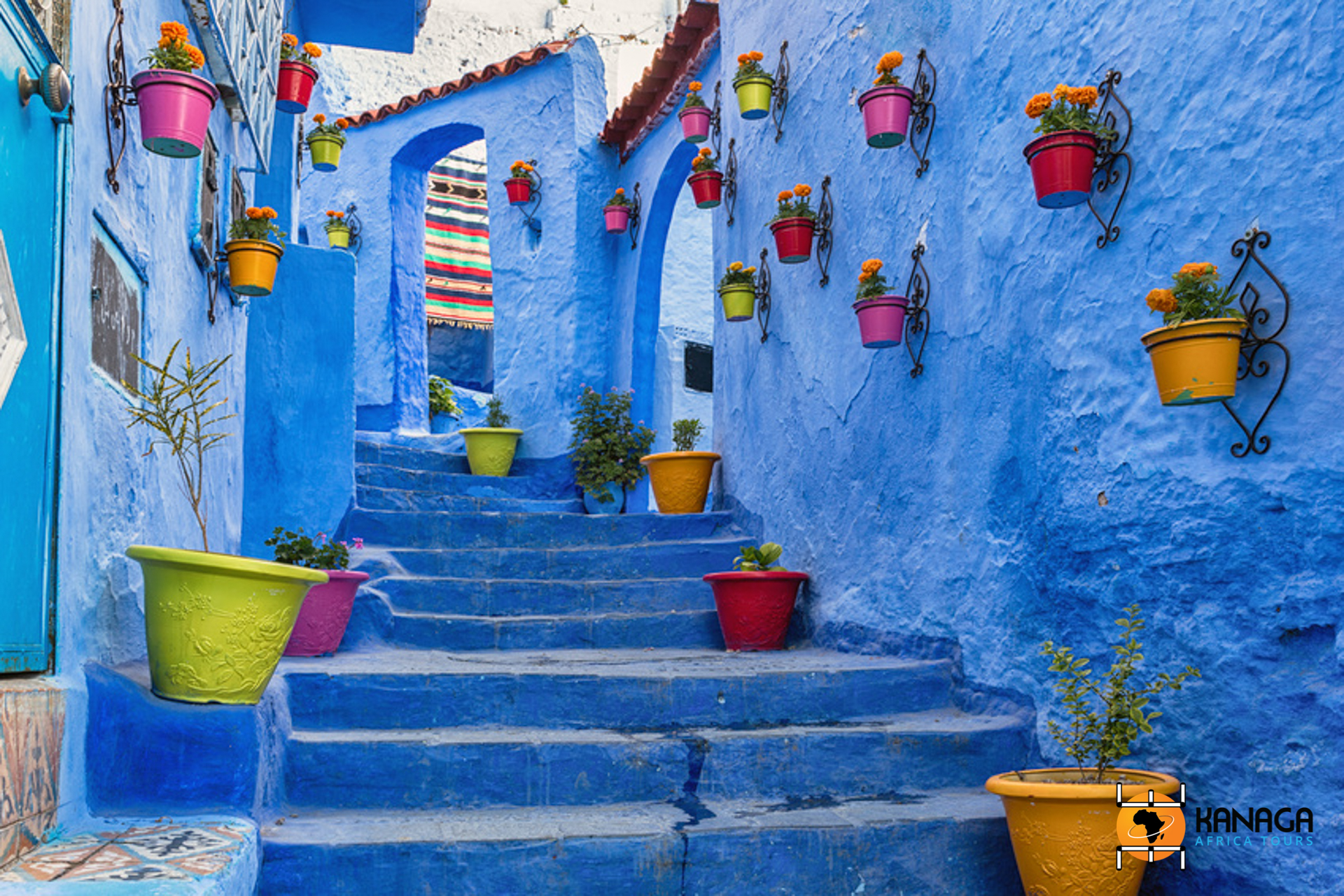The blue medina of Chefchaouen, with its narrow alleyways and characteristic views bathed in the blue hues of painted walls, is certainly one of the most photographed in Morocco. Built in a rural Berber-Andalusian style, it was founded at the end of the 15th century and a stroll through its historic centre, perched at the foot of the Rif mountains, gives you one of Morocco’s most timeless atmospheres.
Founded in 1475 in a strategic position on the heights of the Rif, as a Berber military outpost to counter European incursions, it soon welcomed Muslim and Jewish refugees from Granada who helped give the rural town the typically Berber-Andalusian appearance that still characterises its medina today. Until 1920, Christians were not allowed to enter Chefchaouen on pain of death, which contributed to its aura of a sacred and hostile Berber town, until the Spanish conquered it and abandoned it only after Independence. It was from the 1930s onwards that its houses with their beautiful red tiles and characteristic niche entrances began to be painted blue, a colour that has made it famous throughout the world.
But the enchantment of Chefchaouen can be felt in every aspect, between the mountainous landscapes that dominate it and the broad sweep of the surrounding fertile hills, between the blue angles of the small doors and windows that enliven the walls of the houses, or the aquatic glimpses of the beautiful Ras el Maa waterfall that precedes the entrance to the medina on the north-eastern side. The poetry of Chefchaoun can be read in a winding cobbled alleyway, winding its way between the blue facades, passing under an archway or a low arcade vault, interrupted by a landing giving access to a narrow masonry staircase adorned with colourful vases, among which a sly cat rests.
The “Blue Pearl”, holy city of the Rif, the city is built around its main heart, the beautiful Plaza Uta al-Hamman on which stands the ancient fortified kasbah, with its ochre-coloured walls, and the 15th-century Great Mosque, with its octagonal minaret.
Today the city is a popular tourist destination that has not lost its original atmosphere as an ancient Berber cultural centre, enlivened today by pleasant cafés and restaurants, cosy Riads with their lush interior patios, and interesting craft workshops producing some of the finest woollen fabrics and carpets in the Rif. A short walk along the green paths outside the walls to the Spanish Mosque from the 1920s, or along the Oued Ras el Maa, will complete one of the most picturesque visits in all of Morocco with a naturalistic touch.







